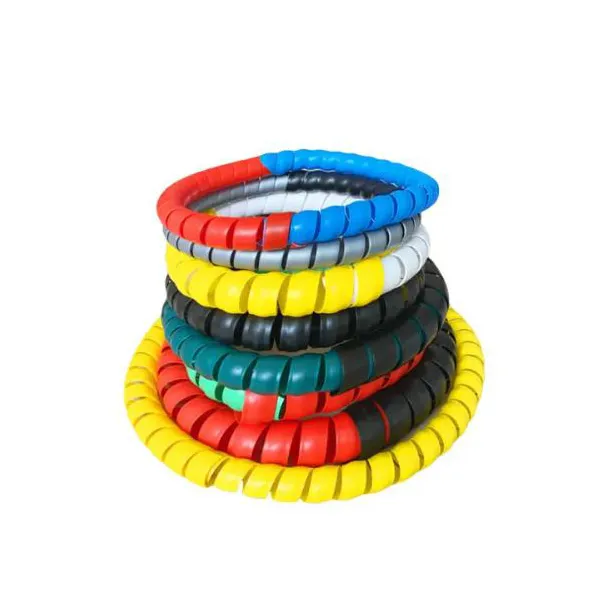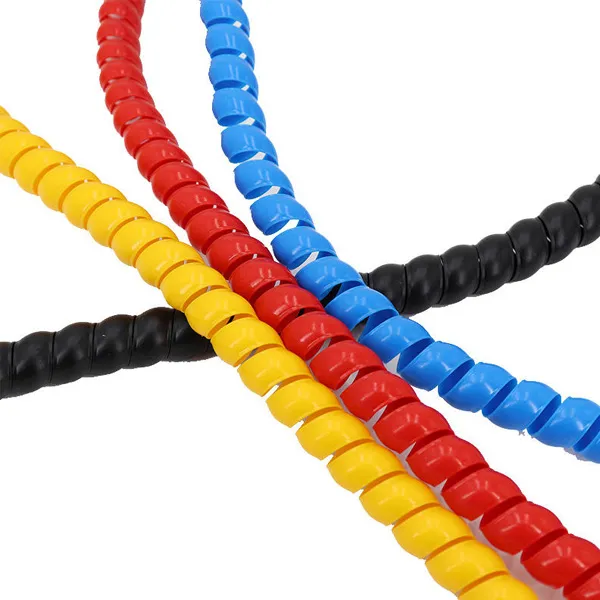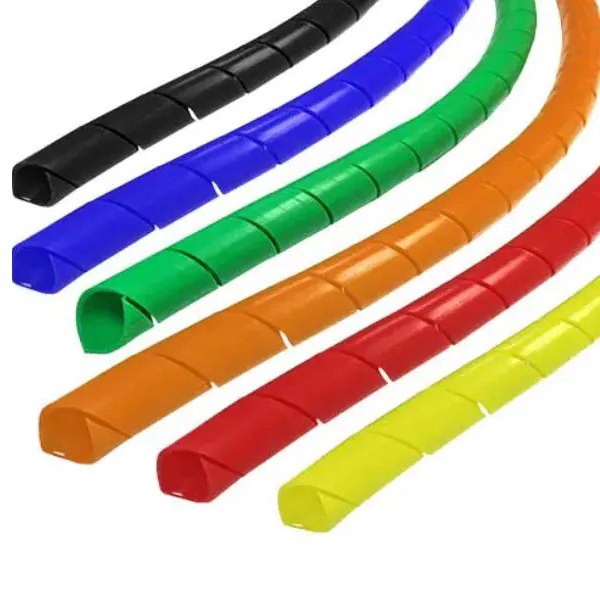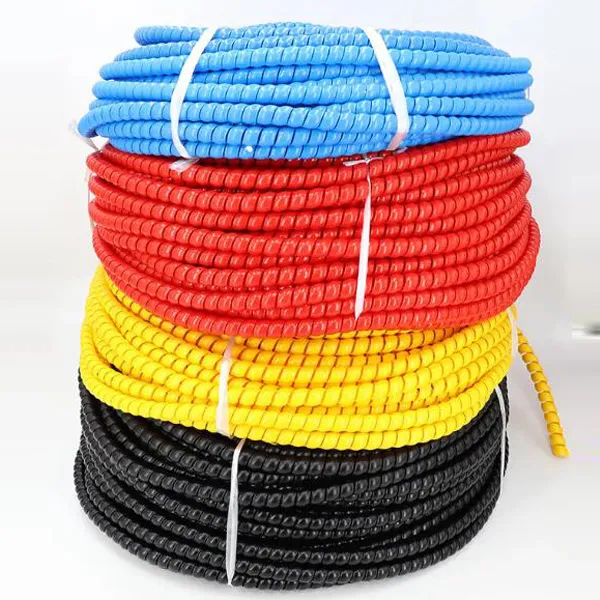The Crucial Role of Polyurethane Pneumatic Tubing in Modern Industrial Automation
In the intricate landscape of industrial automation, the efficiency and reliability of pneumatic systems are paramount. At the heart of these systems lies specialized fluid conveyance, where materials science and precision engineering converge to deliver optimal performance. Among the various options, polyurethane pneumatic tubing stands out as a superior choice, renowned for its exceptional flexibility, durability, and resistance to harsh operating conditions. This comprehensive article delves into the technical intricacies, application advantages, and strategic considerations surrounding this essential component, addressing the needs of B2B decision-makers and engineers seeking robust and long-lasting solutions.
Current industry trends emphasize enhanced automation, miniaturization of components, and the imperative for materials that offer extended service life and reduced maintenance. The demand for materials that can withstand dynamic stresses, abrasion, and a wide range of temperatures is growing, particularly in sectors where operational continuity directly impacts productivity and profitability. The evolution of polyurethane compounds has directly addressed these challenges, providing solutions that not only meet but often exceed traditional performance benchmarks, ensuring reliable operation in even the most demanding environments.
Manufacturing Process of High-Performance Polyurethane Pneumatic Tubing
The manufacturing of high-quality polyurethane pneumatic tubing involves a meticulously controlled extrusion process, starting from the selection of premium thermoplastic polyurethane (TPU) resins. This process ensures the resulting tubing exhibits consistent physical properties, critical for demanding industrial applications.
Process Flow Overview:
- Material Selection and Preparation: High-grade TPU pellets, often ester or ether-based, are chosen for specific properties such as hydrolysis resistance, oil resistance, or microbial resistance. These pellets are thoroughly dried to prevent material degradation during processing, which could lead to defects like porosity or brittleness in the final product.
- Extrusion: The dried TPU pellets are fed into a single-screw or twin-screw extruder. Inside the extruder barrel, they are heated to their melting point (typically 180°C to 220°C) and homogenized into a molten plastic. The molten polymer is then forced through a precision die, which forms the desired tubing diameter and wall thickness. This step is critical for maintaining dimensional accuracy and consistent internal and external diameters.
- Cooling and Sizing: Immediately after exiting the die, the hot tubing enters a vacuum calibration tank or a water bath. The vacuum maintains the tube’s precise dimensions as it cools, preventing collapse or distortion. Cooling rates are carefully controlled to optimize the material’s crystalline structure, enhancing its physical properties.
- Pulling and Cutting: A puller mechanism, often a capstan or caterpillar system, draws the tubing through the cooling stage at a constant speed, maintaining tension and ensuring uniform dimensions. The continuous tubing is then cut to precise lengths or wound onto spools for further processing, such as creating `coiled polyurethane tubing`.
- Quality Control and Testing: Throughout and after the manufacturing process, strict quality control measures are implemented. This includes continuous online monitoring for dimensional consistency (OD, ID, wall thickness), visual inspection for surface defects, and rigorous offline testing. Key tests include burst pressure testing, tensile strength, elongation at break, durometer hardness (Shore A), abrasion resistance (Taber abrasion, e.g., DIN 53516), and flexural fatigue resistance. Products are typically tested against international standards such as ISO 9001 and ASTM D2240 to ensure compliance and performance reliability.
Target industries for these advanced tubing solutions include petrochemical, metallurgy, water supply & drainage, automotive, robotics, and medical applications. The advantages demonstrated in typical application scenarios include significant energy saving due to reduced pressure drops, exceptional corrosion resistance, superior abrasion resistance, and prolonged service life even in dynamic and aggressive environments. For instance, in robotic applications, the high flexibility and kink resistance of polyurethane pneumatic tubing minimize wear on moving parts and maintain consistent airflow, ensuring precision and reliability.

Figure 1: High-precision extrusion of polyurethane pneumatic tubing ensuring consistent quality.
Technical Specifications and Performance Parameters
Understanding the precise technical specifications of polyurethane pneumatic tubing is critical for optimal system design and operational integrity. These parameters dictate compatibility, performance, and longevity in various industrial settings. Below is a detailed table outlining typical specifications for industrial-grade polyurethane tubing, compiled from industry standards and common product offerings.
Typical Polyurethane Pneumatic Tubing Specifications:
| Parameter | Typical Range/Value | Unit/Description |
|---|---|---|
| Material Type | Thermoplastic Polyurethane (TPU) – Ester or Ether-based | N/A |
| Outer Diameter (OD) | 2mm – 16mm | Millimeters (mm) |
| Inner Diameter (ID) | 1mm – 12mm | Millimeters (mm) |
| Wall Thickness | 0.5mm – 2.5mm | Millimeters (mm) |
| Working Pressure | 7 – 12 | Bar (at 20°C, typical) |
| Burst Pressure | 21 – 36 | Bar (at 20°C, Safety Factor 3:1) |
| Temperature Range | -40°C to +80°C | Degrees Celsius |
| Hardness | 90A – 98A | Shore A Durometer (ASTM D2240) |
| Minimum Bending Radius | 10mm (for 4mm OD) to 80mm (for 16mm OD) | Millimeters (mm) |
| Abrasion Resistance | Excellent (< 50 mm³ loss, DIN 53516) | Volume loss (low indicates high resistance) |
| Fluid Compatibility | Air, water, oils, greases, weak acids/bases | N/A |
These specifications underscore the versatility and robustness of polyurethane pneumatic tubing. Its high Shore A hardness indicates superior resistance to indentation, while its wide temperature range ensures stable performance across diverse climates and operational heat conditions. The excellent abrasion resistance makes it ideal for applications involving constant movement or contact with abrasive surfaces, significantly extending the service life compared to materials like Nylon or PVC. This data, corroborated by adherence to international standards, reinforces the authoritativeness of PU tubing solutions.

Figure 2: Diverse sizes and colors of polyurethane pneumatic tubing readily available for industrial customization.
Application Scenarios and Industry Impact
The unique properties of polyurethane pneumatic tubing make it indispensable across a spectrum of demanding industrial applications where reliability and performance are critical. Its adaptability to various environments and operational stresses contributes significantly to system uptime and efficiency, demonstrating tangible experience benefits for users.
Key Application Sectors:
- Robotics and Automation: In robotic arms and automated assembly lines, `pu flexible ducting` is extensively used for its exceptional flexibility, small bending radius, and fatigue resistance. It ensures smooth and continuous operation even with millions of repetitive cycles, minimizing downtime due to tubing failure in dynamic applications.
- Automotive Manufacturing: From paint shops to assembly areas, PU tubing provides reliable pneumatic control for tools, actuators, and clamping systems. Its resistance to oils, greases, and common automotive fluids ensures longevity in these challenging environments, contributing to robust production lines.
- Medical and Pharmaceutical Equipment: For applications requiring high purity, flexibility, and compatibility with various fluids, specialized polyurethane pneumatic tubing (often FDA-compliant) is chosen for pneumatic controls in diagnostic machines, dental equipment, and drug manufacturing processes, where sterility and non-reactivity are paramount.
- Food and Beverage Processing: Food-grade PU tubing is vital for pneumatic systems operating in hygiene-critical areas. It resists aggressive cleaning agents, prevents microbial growth, and ensures non-contamination of products, aligning with stringent industry regulations.
- Material Handling and Packaging: In systems that convey small parts or actuate packaging machinery, the abrasion resistance of PU tubing prevents wear from particulate matter, maintaining system efficiency over time and reducing maintenance frequency.
- Printing and Textile Industries: Pneumatic systems for precise control of rollers and cutting mechanisms benefit from the consistent performance and durability of PU tubing, even in environments with lint, dyes, and chemicals, ensuring operational precision.
- Coiled Polyurethane Tubing Applications: `Coiled polyurethane tubing` is particularly useful in applications requiring retractable hoses, such as air tools at workstations, car wash bays, or portable pneumatic equipment, offering neat storage and preventing tangling while extending reach, thereby enhancing workplace safety and efficiency.
The ability of polyurethane pneumatic tubing to maintain its structural integrity and performance under continuous flexing and exposure to industrial solvents significantly enhances operational reliability. Customer feedback consistently highlights the reduced need for replacements and lower total cost of ownership compared to alternatives, providing strong experiential evidence of its value.

Figure 3: Polyurethane pneumatic tubing seamlessly integrated into an automated assembly line, ensuring precision movements.
Technical Advantages Over Alternative Materials
When selecting pneumatic tubing, the choice of material directly impacts system performance, maintenance cycles, and overall operational costs. Polyurethane pneumatic tubing offers distinct advantages over traditional materials like Nylon (PA) and Polyvinyl Chloride (PVC), making it a superior engineering choice for critical applications.
Comparative Analysis: PU vs. Nylon vs. PVC
| Property | Polyurethane (PU) | Nylon (PA) | PVC |
|---|---|---|---|
| Flexibility | Excellent (Small bend radius, highly kink resistant) | Good (Less flexible, higher minimum bend radius) | Fair (Stiffer, prone to kinking, poor cold flexibility) |
| Abrasion Resistance | Superior (Significantly higher than PA/PVC) | Good | Fair |
| Chemical Resistance | Good (Oils, greases, weak acids/bases) | Very Good (Most solvents, petroleum products) | Good (Many acids, alkalies) |
| Pressure Rating | High | High | Moderate |
| Temperature Range | Wide (-40°C to +80°C) | Wide (-40°C to +100°C) | Narrow (0°C to +60°C) |
| Hydrolysis Resistance | Good (Ether-based PU offers excellent resistance) | Fair (Degrades in hot water/steam) | Good |
The superior flexibility and abrasion resistance of `pu flexible ducting` significantly extend its service life in dynamic applications, reducing replacement frequency and associated labor costs. This translates to a lower Total Cost of Ownership (TCO) over the product’s lifespan. Furthermore, the smooth inner bore of high-quality polyurethane pneumatic tubing minimizes frictional losses, contributing to energy efficiency in compressed air systems by maintaining consistent pressure with less compressor effort.
Leading manufacturers adhere to stringent quality standards, often holding ISO 9001 certifications, and their products are frequently specified by major OEM clients in critical industries. This underscores their authoritativeness and reliability in the market, built over years of service in demanding environments, further validating the product’s robust performance and expertise in its application.
Vendor Comparison and Customized Solutions
Selecting the right vendor for polyurethane pneumatic tubing is as crucial as selecting the material itself. A strong vendor partnership ensures access to high-quality products, comprehensive technical expertise, and tailored solutions that meet specific project requirements.
Key Factors in Vendor Comparison:
- Material Quality and Sourcing: Reputable vendors use only virgin, high-grade TPU resins from trusted chemical suppliers, ensuring consistency in material properties and avoiding potential issues with recycled or inferior materials.
- Manufacturing Precision: Prioritize manufacturers employing advanced extrusion technologies, precision dies, and automated quality control systems to guarantee tight dimensional tolerances (OD, ID) and consistent performance.
- Certifications and Compliance: Adherence to international standards (e.g., ISO 9001 for quality management, RoHS, REACH for environmental compliance) and industry-specific certifications (e.g., FDA for food contact, UL for fire safety) is paramount, signifying authoritativeness and trustworthiness.
- Technical Support and Expertise: A knowledgeable sales and engineering team can provide invaluable assistance in material selection, system design, and troubleshooting for specialized applications, demonstrating deep expertise.
- Customization Capabilities: The ability to provide custom colors, specific lengths, multi-bore tubing, special additives (e.g., anti-static, UV stabilized), or pre-assembled `coiled polyurethane tubing` with fittings can significantly streamline integration and reduce assembly costs for unique projects.
- Lead Time and Fulfillment: Reliable lead times for both standard and custom orders are essential for managing project schedules and inventory effectively, indicating logistical competence.
Tailored Solutions for Unique Demands:
Beyond standard offerings, many industrial applications require tubing solutions that are precisely engineered to meet unique demands. Customized `pu flexible ducting` can include:
- Color Coding: For easy identification and organization of complex pneumatic circuits, improving maintenance and safety.
- Multi-bore Configurations: Bundling multiple tubes into a single jacket for neat routing, reduced installation time, and protection in cable track applications.
- Special Additives: Enhancing properties like UV resistance for outdoor use, anti-static for sensitive electronic environments (e.g., cleanrooms), or flame retardancy for safety-critical zones.
- Pre-formed Coils: Precision-wound `coiled polyurethane tubing` to specific dimensions for immediate integration into retractable tools or dynamic applications, optimizing workflow.
- Hybrid Tubing: Combining PU with other materials for specific barrier properties, enhanced strength, or electrical insulation in multi-layer constructions.

Figure 4: Custom color-coded polyurethane pneumatic tubing for streamlined system identification and maintenance.
Application Case Studies: Proving Reliability in Practice
Real-world application studies highlight the tangible benefits and proven reliability of high-performance polyurethane pneumatic tubing in challenging industrial environments, demonstrating practical experience and sustained performance.
Case Study 1: Automotive Body Shop Robotics
Challenge: A major automotive manufacturer faced frequent failures of traditional nylon tubing in robotic welding cells due to constant flexing, abrasion from metal dust, and exposure to weld spatter. Downtime for tubing replacement was significantly impacting production schedules and profitability.
Solution: The facility upgraded to specialized, abrasion-resistant polyurethane pneumatic tubing with enhanced flexibility. Its superior flex life and inherent toughness allowed it to withstand the rigorous, repetitive movements of robotic arms and the abrasive workshop environment, significantly improving system resilience.
Results: After implementing the PU tubing, the mean time between failures (MTBF) for pneumatic lines in the robotic cells increased by over 250%, from an average of 4 months to over 14 months. This significantly reduced maintenance costs, eliminated unscheduled downtime, and resulted in a projected annual saving of over $50,000 in a single production line due to improved operational continuity.
Case Study 2: Food & Beverage Packaging Plant
Challenge: A large-scale food packaging plant required pneumatic lines that were not only FDA-compliant but also resilient to frequent washdowns with caustic cleaning agents (e.g., sodium hydroxide solutions) and hot water. Standard PVC tubing quickly became brittle, cracked, and compromised hygiene standards.
Solution: They adopted an FDA-approved, ether-based polyurethane pneumatic tubing, specifically chosen for its excellent hydrolysis resistance and broad chemical compatibility, especially in wet and corrosive environments.
Results: The PU tubing demonstrated exceptional longevity, showing no signs of degradation or embrittlement after two years of continuous exposure to harsh cleaning cycles and steam sterilization, where previous materials failed within six months. This ensured continuous compliance with stringent hygiene standards, eliminated product contamination risks, and improved overall operational efficiency and safety.

Figure 5: High-performance polyurethane pneumatic tubing enduring challenging industrial conditions with superior resilience.
Trustworthiness and Support: FAQs, Lead Time, Warranty, and Customer Service
Establishing trust with B2B clients goes beyond product specifications; it encompasses transparent policies, reliable support, and clear commitments. Our approach to providing high-quality polyurethane pneumatic tubing is backed by comprehensive customer support, ensuring peace of mind and sustained operational excellence.
Frequently Asked Questions (FAQs):
- Q: What is the primary difference between ester-based and ether-based PU tubing?
- A: Ester-based PU offers superior tensile strength, abrasion resistance, and oil resistance, making it ideal for general industrial applications. Ether-based PU provides excellent hydrolysis resistance, meaning it performs better in humid or wet environments and is often preferred for outdoor, medical, or food-grade applications due to its fungal resistance.
- Q: How do I select the correct tubing size for my pneumatic system?
- A: Selection depends on flow rate requirements (liters per minute or cubic feet per minute), operating pressure, and available space for routing. Generally, a larger inner diameter (ID) facilitates higher flow rates with less pressure drop. Consult our technical team or refer to industry standards for specific sizing guidelines based on your system’s demands.
- Q: Is polyurethane pneumatic tubing resistant to UV degradation?
- A: Standard PU tubing may degrade over prolonged exposure to UV radiation, leading to discoloration and eventual material property degradation. For outdoor applications or environments with high UV exposure, we offer specialized UV-stabilized polyurethane tubing formulations to ensure extended service life and performance integrity.
- Q: Can PU tubing be used with push-to-connect fittings?
- A: Yes, high-quality polyurethane pneumatic tubing is manufactured with tight outer diameter tolerances, ensuring a secure and leak-free connection with most standard push-to-connect fittings. Proper, square cutting of the tube end and full insertion into the fitting are crucial for optimal performance and seal integrity.
Lead Time and Fulfillment:
We understand the importance of timely delivery for maintaining operational schedules. For standard `pu flexible ducting` products, typical lead times range from 3-7 business days for stock items, with expedited shipping options available. Custom orders, including specialized colors, lengths, or formulations, generally require 2-4 weeks, depending on complexity, volume, and current production schedules. We maintain robust inventory management and efficient production planning to meet urgent demands whenever possible, ensuring your projects stay on track.
Warranty Commitments:
All our polyurethane pneumatic tubing products are backed by a comprehensive 12-month warranty against manufacturing defects from the date of purchase. This commitment reflects our unwavering confidence in the quality, durability, and craftsmanship of our products, ensuring peace of mind for our industrial partners. Our warranty covers defects in material and workmanship under normal operating conditions. Full details of our warranty policy and claim procedures are readily available upon request.
Customer Support and After-Sales Service:
Our dedicated technical support team, comprised of experienced engineers and product specialists, is available to assist with product selection, application guidance, and troubleshooting throughout the product lifecycle. We provide expert advice to ensure that clients maximize the performance and longevity of their pneumatic systems. Support is accessible via phone, email, and through our comprehensive online resources, including detailed product datasheets, chemical compatibility charts, and installation guides. We also offer on-site consultation and training for large-scale projects or complex integration challenges, ensuring successful deployment and operation.
Conclusion: The Future of Pneumatic Conveyance
The continuous advancement in polymer science, particularly in thermoplastic polyurethanes, positions polyurethane pneumatic tubing as a foundational and indispensable component for the next generation of industrial automation. Its unparalleled combination of flexibility, superior abrasion resistance, broad chemical compatibility, and wide temperature tolerance ensures robust, energy-efficient, and reliable operation across a diverse array of demanding sectors. For B2B decision-makers and engineers, investing in high-quality PU tubing translates directly into enhanced system reliability, significantly reduced maintenance overheads, and a demonstrably lower total cost of ownership, ultimately driving greater productivity and competitive advantage.
As industries increasingly demand more resilient, efficient, and specialized pneumatic solutions, the role of expert manufacturers and their ability to provide both standard and customized `pu flexible ducting` will become even more critical. Choosing the right partner means leveraging cutting-edge material science and manufacturing precision to secure the long-term performance and success of your most vital pneumatic systems, ensuring your operations are future-proof and optimized for efficiency.
References:
- ISO 9001:2015 – Quality management systems — Requirements. International Organization for Standardization.
- ASTM D2240 – Standard Test Method for Rubber Property—Durometer Hardness. ASTM International.
- DIN 53516 – Testing of rubber and elastomers; determination of abrasion resistance; methods using a rotating drum abrasion tester. Deutsches Institut für Normung.
- The Society of Plastics Engineers (SPE). Technical Papers and Journals on Thermoplastic Polyurethanes.
- Modern Plastics Handbook, George Wypych. Elsevier. (General reference on polymer properties and processing).
HEBEI ZHOUCONG IMP AND EXP CO.,LTD. Z-Smartflex, first opend in 2017Industrial Hose china .Located in Shijiazhuang,Hebei, the company has been eminently successful in developing and marketing a complete line of industrial hose,plastic hose, hydraulic hose and fittings. hydraulic hose manufacturers Today, Hebei Zhoucong Imp & Exp Trade Co.,Ltd, group of companies includes two subsidiaries and five distribution centers, as well as many agents, providing a complete line of thermoplastic, rubber oil hose factory rubber and plastic hose products and accessories including couplings and fittings, for use in industrial ,agriculture,rubber water hose manufacturers and garden applications.rubber air hose manufacturers